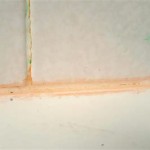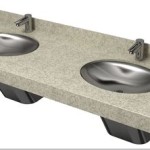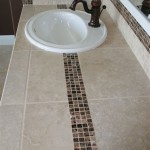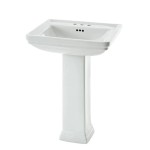Bathroom Sink Countertop Paint: A Guide to Revitalizing Your Space
A bathroom countertop is one of the most heavily used surfaces in a home. It endures daily splashes of water, the abrasiveness of cleaning products, and the weight of toiletries. Over time, this constant wear and tear can lead to scratches, stains, and faded color. A chipped countertop can detract from the overall aesthetic appeal of your bathroom and even affect its value. While replacing the countertop may seem like the only solution, bathroom sink countertop paint presents a more affordable and convenient alternative. This guide explores the benefits, application process, and considerations associated with using countertop paint to revitalize your bathroom space.
Benefits of Using Bathroom Sink Countertop Paint
Applying countertop paint to your bathroom sink offers several advantages:
- Cost-effectiveness: Compared to replacing the entire countertop, painting provides a significantly more budget-friendly option. You can achieve a fresh, updated look without breaking the bank.
- Customization: Countertop paint comes in a vast array of colors and finishes, allowing you to personalize your bathroom to match your unique style and preferences. You can choose a bold statement color or opt for a subtle, classic hue to complement the existing decor.
- Ease of application: Most countertop paints are designed for easy application, allowing even DIY enthusiasts with minimal experience to achieve professional-looking results. The process typically involves cleaning, prepping, applying multiple layers of paint, and sealing the finish.
- Quick turnaround time: Painting a countertop is a relatively quick project compared to replacing it. Depending on the size of the countertop and the number of coats applied, the entire process can be completed within a few days.
Choosing the Right Countertop Paint
Selecting the right countertop paint is crucial for achieving a durable and aesthetically pleasing finish. Consider the following factors:
- Type of countertop: The type of countertop material will dictate the type of paint you should use. For example, epoxy-based paints are well-suited for laminate countertops, while acrylic paints are suitable for ceramic tile or porcelain.
- Finish: Countertop paints come in various finishes, including matte, satin, semi-gloss, and high-gloss. The choice depends on your desired aesthetic. Matte finishes provide a subtle and understated look, while high-gloss finishes offer a more reflective and modern appeal.
- Durability: Check the paint's durability rating, particularly its resistance to scratches, stains, and water damage. Opt for a paint with a high durability rating, especially for areas prone to heavy wear and tear.
- Color and design: Explore various color options and consider the existing color scheme of your bathroom. Choose a color that complements the surrounding elements, creating a cohesive and visually appealing space.
Applying Bathroom Sink Countertop Paint
The application process for bathroom sink countertop paint involves several steps, ensuring a smooth and long-lasting finish. Follow these guidelines:
- Preparation: Thoroughly clean the countertop with a degreaser and allow it to dry completely. Sand the surface to create a rough texture for better paint adhesion. Mask off surrounding areas to prevent paint spills and drips.
- Priming: Apply a primer specifically designed for countertop surfaces. This step creates a smooth and even base for the paint, enhancing its adhesion and ensuring a uniform finish.
- Painting: Apply thin, even coats of paint, allowing each coat to dry completely before applying the next. Multiple thin coats are recommended for optimal coverage and a smooth, even finish.
- Sealing: Once the paint has dried, apply a sealant specifically formulated for countertop surfaces. This step provides a protective barrier, resisting scratches, stains, and water damage, extending the lifespan of your painted countertop.
It's important to follow the manufacturer's instructions for each product. The drying time and application techniques may vary depending on the specific paint and sealant used. For optimal results, it's recommended to use a high-quality brush or roller. Consider using painter's tape to create sharp lines and protect surrounding areas from accidental paint splatters.
By following these steps and using the appropriate materials, you can achieve a professional-looking and long-lasting finish for your bathroom sink countertop. Remember that proper preparation and application are key to maximizing the longevity and aesthetics of your painted countertop. With some effort and attention to detail, you can transform your bathroom into a stylish and functional space without breaking the bank.

How To Easily Spray Paint Bathroom Countertops My Homier Home
:strip_icc()/101922779-2cbc45e123c34827afb4f601723b03ca.jpg?strip=all)
How To Paint Bathroom Countertops

Paint Bathroom Vanity Countertop Sink So Easy A Piece Of Rainbow

Paint Bathroom Vanity Countertop Sink So Easy A Piece Of Rainbow

Paint Bathroom Vanity Countertop Sink So Easy A Piece Of Rainbow

Before And After Bathroom Vanity Transformation With Painted Tile Countertop The Minimal Ish Mama

Can You Paint A Countertop Re Sick Of Absolutely Recreated Designs

How To Easily Spray Paint Bathroom Countertops My Homier Home

How To Paint A Countertop Don T Make These Mistakes Blessed Beyond Crazy

How To Paint A Countertop Don T Make These Mistakes Blessed Beyond Crazy
Related Posts







